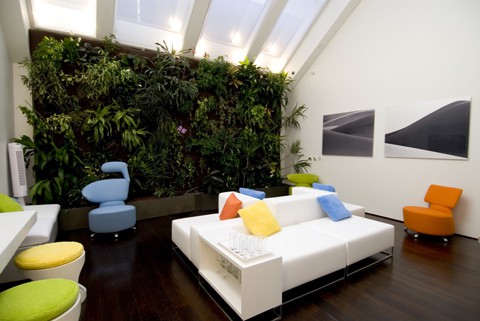Did you know that in addition to carbon dioxide, humans release as much as 150 volatile substances from our bodies, including carbon monoxide, methane, ammonia, phenol, and hydrogen sulphide?!
I got this from the book “How To Grow Fresh Air – 50 House Plants that Purify Your Home or Office” by Dr. Wolverton.
Since we have put people into space, and thus had to live in airtight small spaces, a lot of study has been done on the effect of humans on air quality.
The conclusion is obvious: if you seal humans in an airtight space the toxic levels will quickly increase and eventually kill the inhabitants. This is why it is so important to monitor oxygen and chemical levels when in a space station.
But what about here on earth. Ever since green builders have started building energy efficient buildings they have had to address the same issues astronaughts have to deal with.
Why? Because an energy efficient home is a very tightly sealed space. It does not breathe through the normal cracks that a “normal” house has. There is no ambient ventilation.
This is why it is even more important to avoid chemicals when building an energy efficient home. If you put formaldehyde laden cabinets in a normal home the VOC will partially escape through the housing cracks. If you put chemical laden cabinets in an airtight home the chemical is staying in the house until the inhabitants absorb it all.
And this is why I bought the book “How to Grow Fresh Air.”
As a green contractor in Brooklyn I am always looking for ways to do green brownstone renovations simply. And what can be simpler than using plants to cleanse the air!
What the book points out is that yes plants do remove toxins from the air. But not all. Like all green building there is no magic bullet. It is about percentages. Adding certain plants to the home will increase the percentage of toxins from the air and that is a great thing.
It means the mechanical ventilation (run on electricity) can run a certain percentage less. It means the air will be a certain amount cleaner. It is all good.
The book does a great job at listing the plants and their effectiveness at removing chemicals. If you have any interest in what types of plants work for reducing the toxins in your house I highly recommend this book.
Being a green builder in Brooklyn I was especially interested if there were any indigenous house plants on their list. Unfortunately not.
It turns out that all the common house plants aresuited for warm, partly damp environments such as a home and so they pretty much all come from Asia, Africa and South America.
Like dogs and cats these plants have become part of the human world, bred over generations to the point that they are very much part of the human-plant relationship that other species like corn, soy and rice have with us.
As such, the term indigenous is a little moot.
Anyway, the main reason I got the book was to improve our green wall installation services. Eco Brooklyn installs indoor and outdoor living walls. The indoor walls can consist of these kinds of plants. The idea is to create a living wall that consumes little water (or gray water, or rainwater), is beautiful, and helps purify the Brownstone air.
I found this book to be very helpful in this. Here is an example of a living wall:

